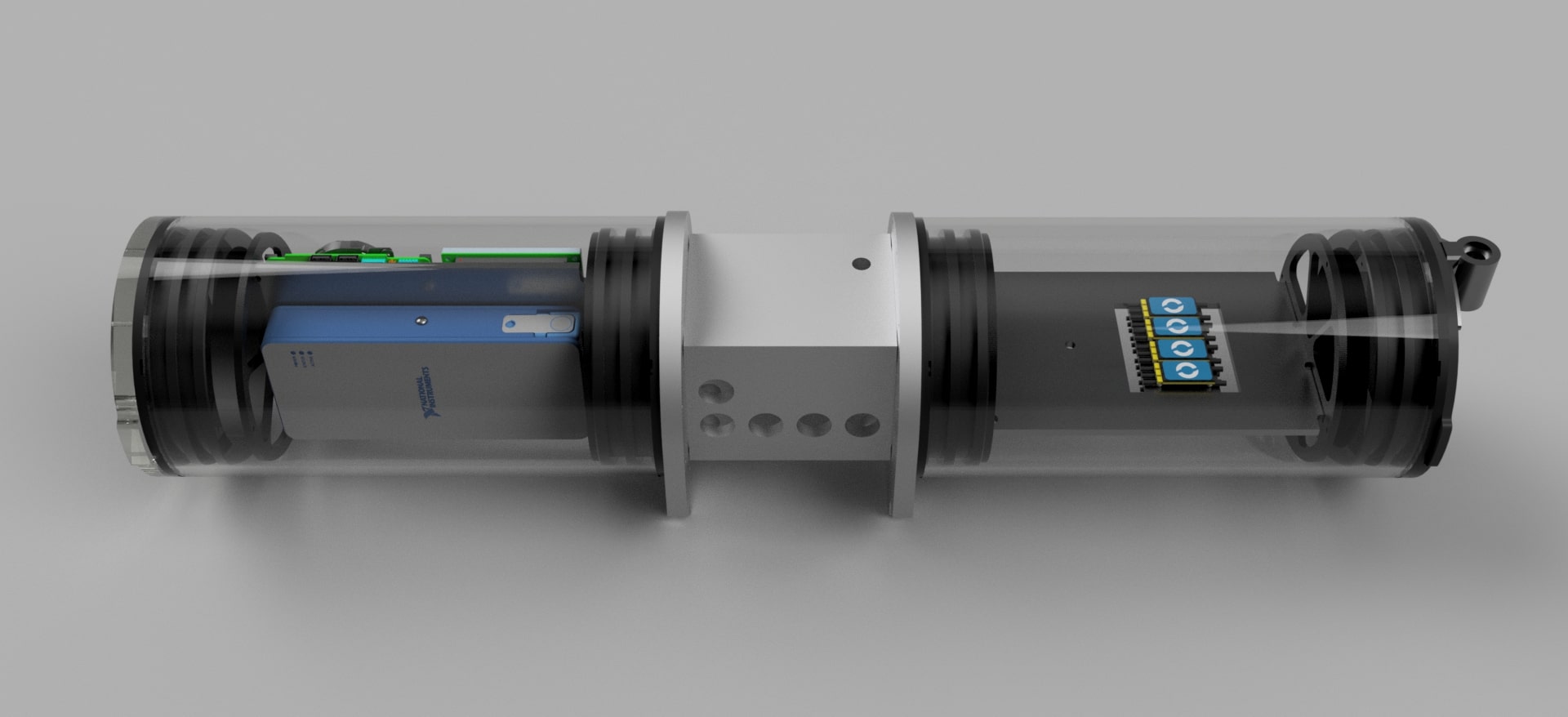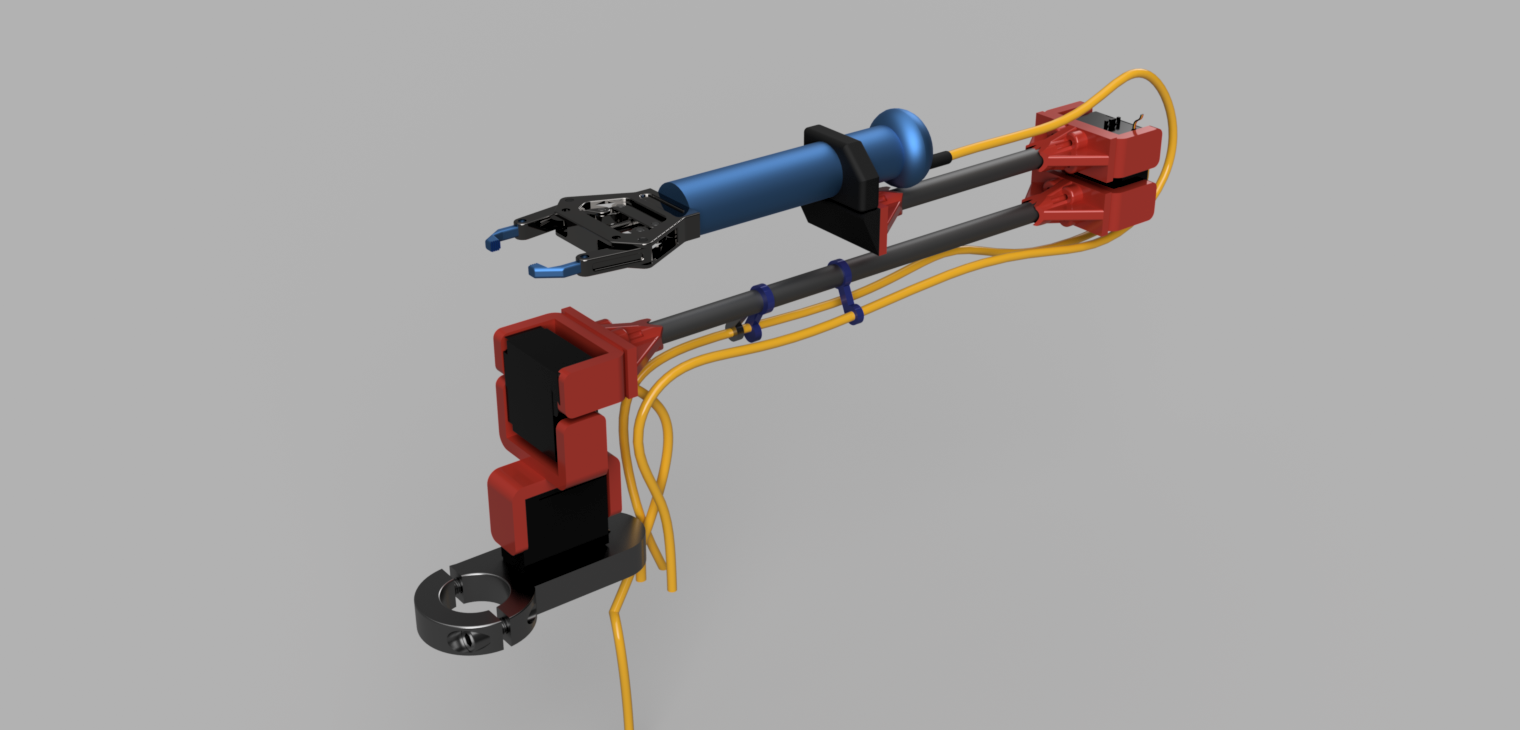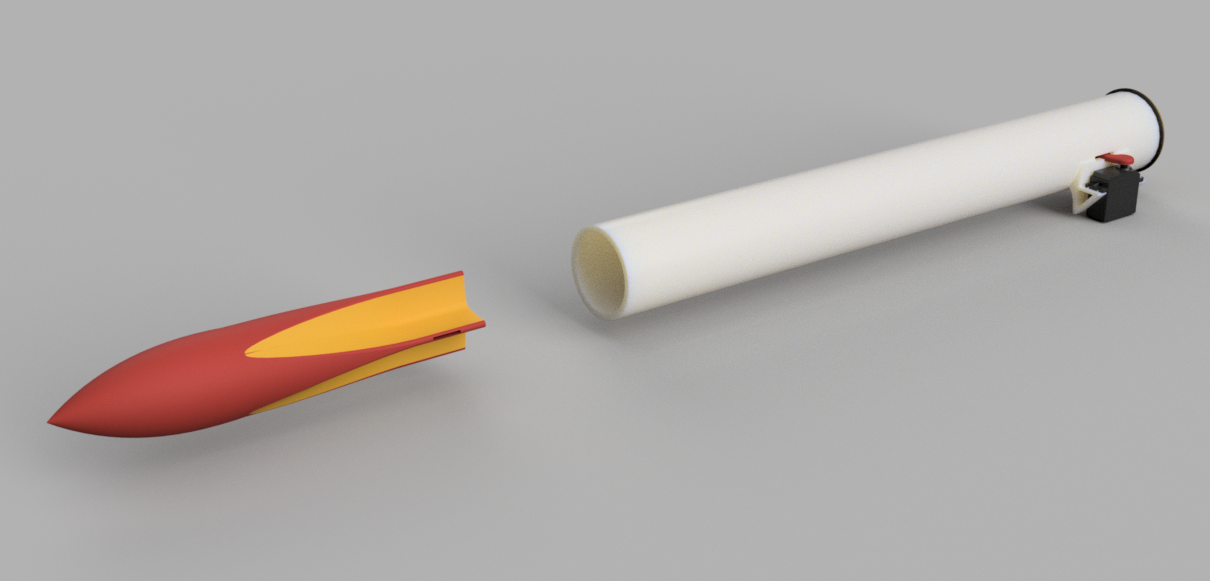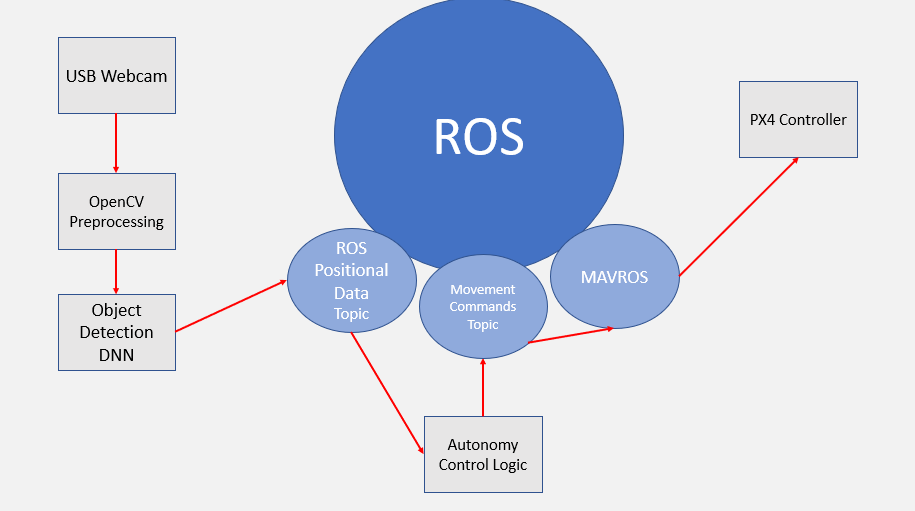Design & Technical Specifications
Mechanical

Electronics Enclosure and Connector Box
It was important to us to be able to work on the electronics enclosure separately from the chassis. Because of this, we utilize a center connector box where all of our thrusters and sensors route to. We use Blue Trail Engineering connectors for their cost and size to be able to remove the entire assembly without it being connected to anything on the chassis. The connector box also doubles as a heat-sink, given that it is constantly touching the water and being cooled. The dual enclosure design also allows us to keep everything symmetrical, and the buoyancy neutral.
Fully Modular Chassis
Our custom-designed modular chassis allows for a variety of operations such as quick-swapping sensors, or repairing broken components quickly and efficiently. Not only is the chassis fully customizable, it is made out of four aluminum tubes which allows the entire chassis to be light and cheap. Hardware can be installed using shaft collars, allowing almost anything to be mounted.


Fully Modular Chassis
Our custom thruster mount assembly is used for a variety of things on Nautilus. Nautilus has four vertical thrusters and four horizontal thrusters, angled 45 degrees. This allows us to have six degrees of freedom and complete stability and control over Nautilus. The thruster mounts ensure that the motors are rigid and their position is precise to ensure stability and control. The mounts also act as a device to keep the chassis rigid, as well as a hoisting point. There are plans to perform structural analysis on the mounts in order to remove excess material and save on weight.
Arm
The arm has 3 joints and can extend out to 18 inches. The tip of the arm has a hinged claw that allows it to grasp various objects. A3 degree of freedom arm was chosen in order to gain the flexibility in the operation of being able to position the end effector precisely in three dimensions without needing to precisely position the vehicle.


Torpedo
The Torpedo launcher uses a custom spring launching mechanism that jets out the torpedo. It uses a servo to retain the torpedo against a compressed spring. When the servo is signaled to release, the retention mechanism goes off and the torpedo is launched outwards with the compressed potential energy of the spring. The servo mechanism is located on the outer side, this mechanism allows the team to easily reload the tube. As well, the spring is kept captive in the mechanism to prevent it from flying out when the torpedo launches, and to make reloading easier. The positioning of the launcher parallel to the forward axis of the sub allows us to aim by simply rotating the sub.
Dropper
The Dropper consists of two tubes, each containing a golf ball, which is both blocked by a plate attached to a servo. To drop a golf ball, the servo can swing the plate out from under one of the tubes while keeping the other tube covered. to drop the second ball, the servo simply swings the plate to the other side. This allows the team to have two attempts at landing the golf ball in the proper position while minimizing the complexity of the dropper system.

Electrical
The electrical system of the sub contains three main subsystems. The computers, for vision processing and autonomy calculation; the power system, which includes the batteries, monitoring, and thrusters; and the sensor system, containing the depth sensors, sonar, and DVL.
Computers
The computer subsystem consists of an Intel NUC Mini PC and an Nvidia Jetson single board computer. The NUC's job is to run the autonomy code, collect and log data from the sensors, and act as a MAVLINK proxy. The Jetsons only purpose is for vision processing. In addition to these computers is a Netgear network switch to felicitate network communication between the computers, power systems, and ground station via tether. Lastly, the motor controller is a Pixhawk PX4 which communicates to the NUC over a USB connection. In the future, we would like to design our own controller which integrates with the powerboard to remove the added complexity of a full autopilot system for motor control.
Power Systems
At its core, the power system relies on a custom powerboard. This powerboard was designed to do everything power related and any extra utilities needed by the sub. In addition to simple voltage regulation, the powerboard also has the ability to monitor the current from the computers and thrusters independently. This allows for more accurate battery runtime calculations and the potential in the future for the motor controller board to dynamically adjust the speed of each thruster to regulate the overall power draw to a soft limit. Another important feature of the powerboard is its soft shutdown and sleep mode. Instead of abruptly cutting power to the computer systems when the power switch is flipped, the powerboard will first send a command to the computers to stop running scripts and gracefully shut down, only then will it remove power from the sub. The last interesting feature is the inclusion of an environmental sensor which monitors internal temperature, and pressure. The temperature allowed us to evaluate the effectiveness of the aluminum connector box to remove heat from the vessel. The pressure sensor allows the vehicle to preform an automated leak test. By creating a vacuum in the enclosure, the powerboard watches how the pressure decreases over time to determine if the enclosure is airtight. This was included in the design because the large volume of the tubes, any air leak would be very slow; this required team members to constantly monitor the pressure gauge for long periods of times. This feature removed that requirement and allowed that team member the ability to work on other tasks during field tests during leak tests. Other features include:
· Leak Detection
· Emergency Stop
· RGB LED Lighting control
· Recirculation Fans Control
· Telemetry Logging
The batteries used to power the vessel are two Blue Robotics batteries in parallel. This dual battery system was chosen to allow extended runtime for continuous testing and to provide increased current capabilities. Each battery has its own enclosure on each side of the sub to distribute the weight.
To run the thrusters, Blue Robotics ESCs are driven by a Pixhawk PX4.
Sensors
The following is a list of all sensors installed on the vehicle.
- · Blue Robotics Ping Sonar
- · Blue Robotics Ping 360
- · BAR Pressure/Depth Sensor
- · Leopard Imaging Cameras
- · Vectornav VN100
- · Pixhawk PX4
For future competitions, we will also include:
· Passive RESON TC4013 Hydrophone Array
· Nortek DVL11000
Ground Station Concept
For future competitions, we plan on making an adaptable
ground station that can be used to control current and future underwater and
surface vehicles. This ground station will include everything needed to
remotely control, monitor, and update software on the vehicle in the field. The
ground station is planned to have an integrated computer and display, as well
as ethernet and Wi-Fi capabilities. In addition to this, it will also include
an embedded system which independently communicates with the vehicle. This
embedded system will feature a small touchscreen that can be used to select and
execute autonomous programs, as well as interfacing with physical buttons and
switches to provide remote estop and control modes. Lastly, the embedded system
will get mission critical information such as the state of the autonomous
program and battery information which it will display on a dedicated screen. We
hope to equip the vehicle with a low speed underwater modem so that these
mission critical displays can always be updated even when untethered.
Software


TensorFlow
The RoboSub International Competition uses buoys with images imprinted on them as objectives. The Nautilus, our Autonomous Underwater Vehicle (AUV), must detect and classify the images. Nautilus uses TensorFlow1 (TF1), an open-source Machine Learning (ML) Library, to train a custom Object Detection Artificial Intelligence (AI). The Custom TensorFlow1 AI serves two purposes. First is to find the position of the image relative to the heading of Nautilus. The AI Draws a ‘bounding box’ around the image to determine where the image is in Nautilus’s field of view. From that data, we can correct to ensure that the buoy is in line with the heading. The second purpose of the custom TF1 AI is to classify what Nautilus sees. The AI can differentiate between the different images used in the competition, with that data, Nautilus can align her heading with the chosen buoy.
Ground Station Concept
Nautilus implements the Nvidia Jetson TX2 Module to run the custom AI. The Jetson TX2 is Nvidia’s fastest and compact embedded AI computing solution. The module is capable of powering 256 Cuda Cores with 8GB of LPDDR4 video memory with only 7.5 watts of power, all on a module smaller than a Raspberry Pi. This efficiency and compact design enable Nautilus to implement dynamic and flexible custom AI within a high band of performance not achievable with any other device.
The localization of the detected object is published to a ROS Topic where the data can be read by our Navigation Algorithm. The output of the Navigation Algorithm is then able to send commands to the MAVROS Topic, which can communicate movement command to the Pixhawk PX4 Controller, which can regulate the voltages available to our eight T-200 thrusters.

Cuttlefish Overview

Cuttlefish, our partner for Nautilus as a testing/training platform. Cuttlefish is a BlueRobotics BlueROV 2 retrofitted with their Heavy Configuration add-on, as well as a Ping360 Sonar (not pictured). Because everything on Cuttlefish is already pre-configured, it allows the team to test hardware and software easily and efficiently. Some future goals for Cuttlefish is to utilize it as a competing sub to partner Nautilus. There are plans to incorporate data communication between the two so that Cuttlefish can take advantage of the sensors on Nautilus.
